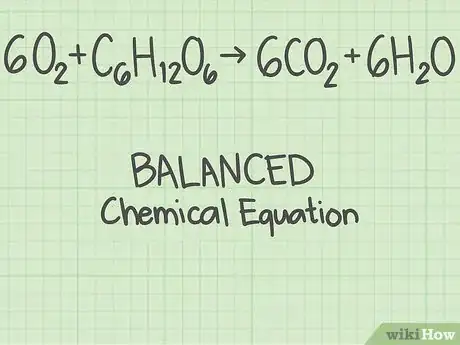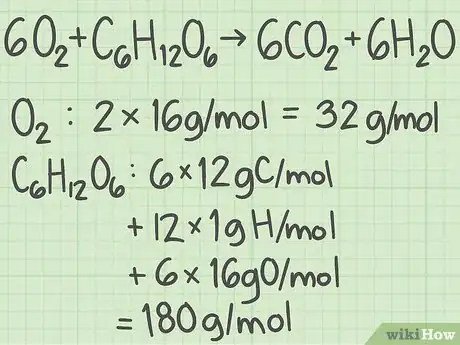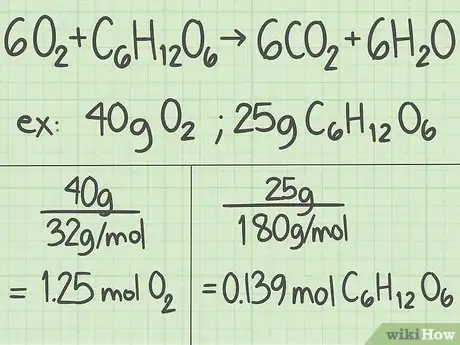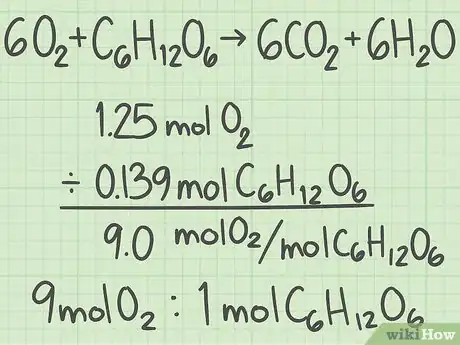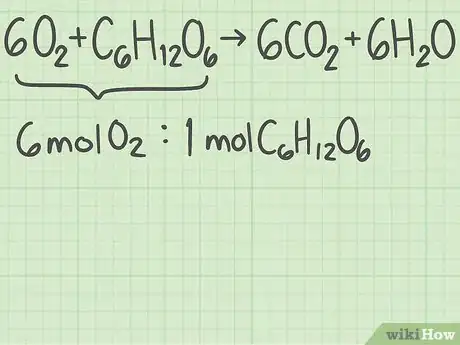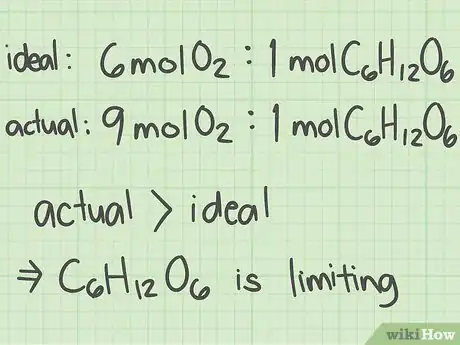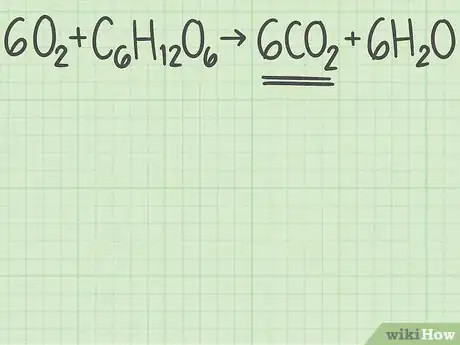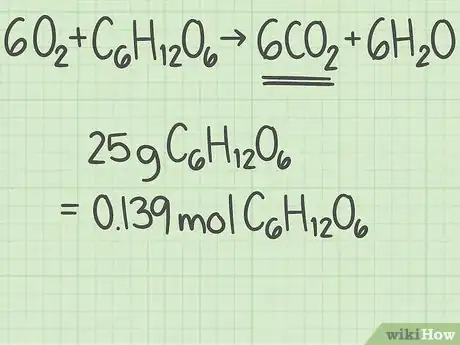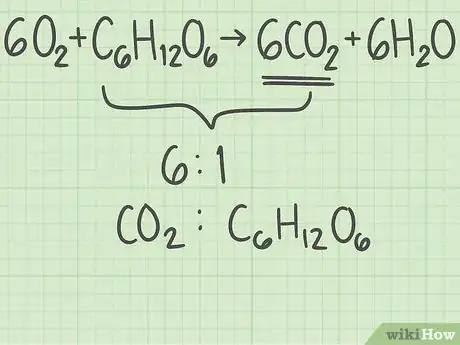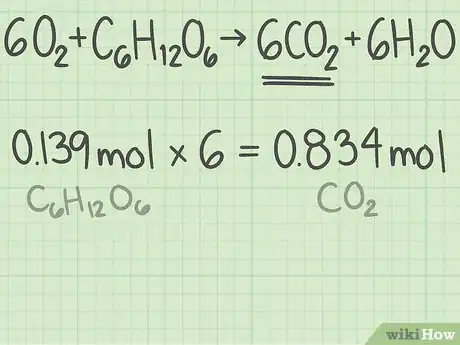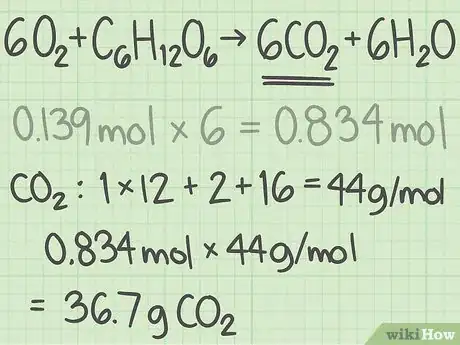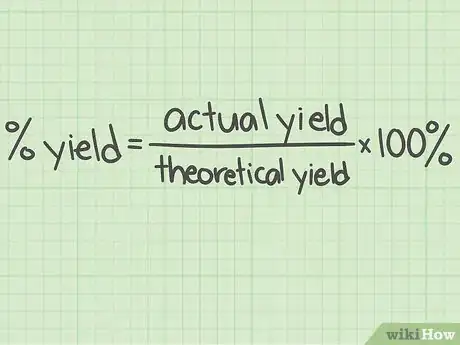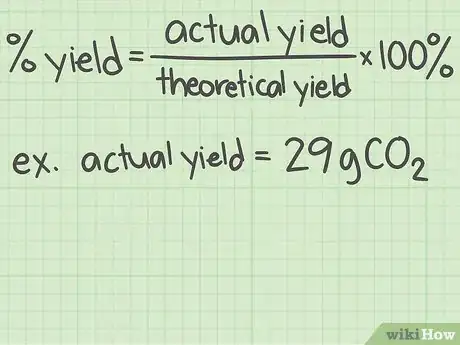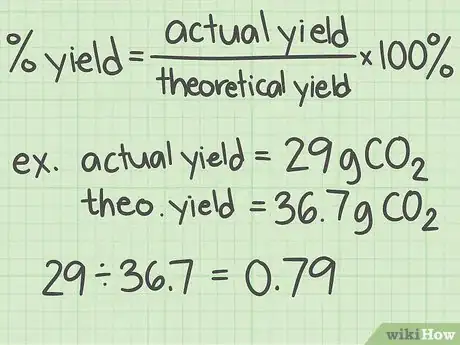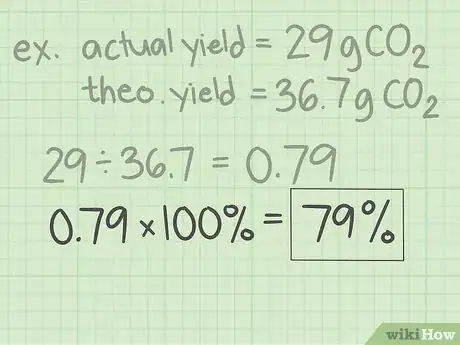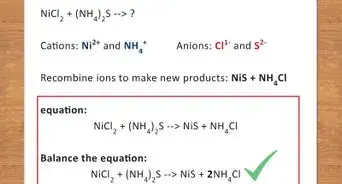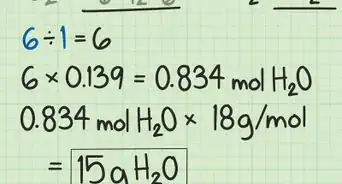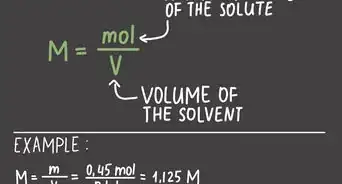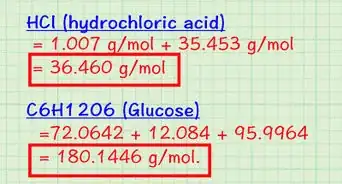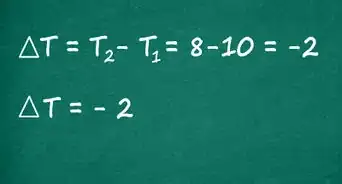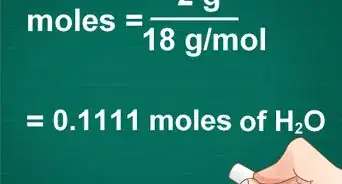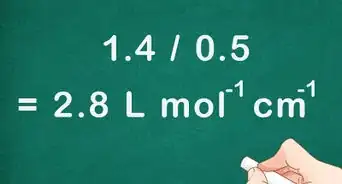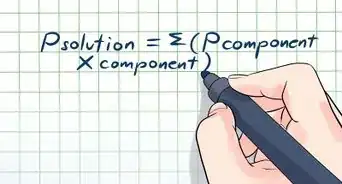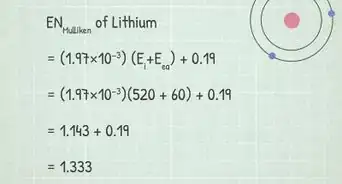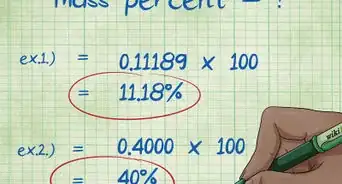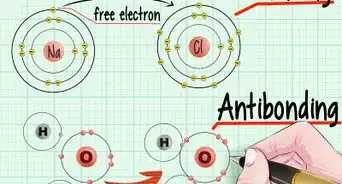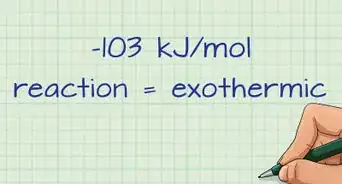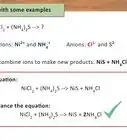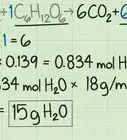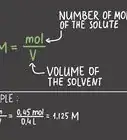This article was co-authored by Meredith Juncker, PhD. Meredith Juncker is a PhD candidate in Biochemistry and Molecular Biology at Louisiana State University Health Sciences Center. Her studies are focused on proteins and neurodegenerative diseases.
There are 10 references cited in this article, which can be found at the bottom of the page.
wikiHow marks an article as reader-approved once it receives enough positive feedback. This article received 12 testimonials and 80% of readers who voted found it helpful, earning it our reader-approved status.
This article has been viewed 2,646,994 times.
In chemistry, the theoretical yield is the maximum amount of product a chemical reaction could create based on chemical equations. In reality, most reactions are not perfectly efficient. If you perform the experiment, you'll end up with a smaller amount, the actual yield. To express the efficiency of a reaction, you can calculate the percent yield using this formula: %yield = (actual yield/theoretical yield) x 100. A percent yield of 90% means the reaction was 90% efficient, and 10% of the materials were wasted (they failed to react, or their products were not captured).
Steps
Finding the Limiting Reactant
-
1Start with a balanced chemical equation. A chemical equation describes the reactants (on the left side) reacting to form products (on the right side). Some problems will give you this equation, while others ask you to write it out yourself, such as for a word problem. Since atoms are not created or destroyed during a chemical reaction, each element should have the same number of atoms on the left and right side.[1]
- For example, oxygen and glucose can react to form carbon dioxide and water: →
Each side has exactly 6 carbon (C) atoms, 12 hydrogen (H) atoms, and 18 oxygen (O) atoms. The equation is balanced. - Read this guide if you are asked to balance an equation yourself.
- For example, oxygen and glucose can react to form carbon dioxide and water: →
-
2Calculate the molar mass of each reactant. Look up the molar mass of each atom in the compound, then add them together to find the molar mass of that compound. Do this for a single molecule of the compound.
- For example, 1 molecule of oxygen () contains 2 oxygen atoms.
- Oxygen's molar mass is about 16 g/mol. (You can find a more precise value on a periodic table.)
- 2 oxygen atoms x 16 g/mol per atom = 32 g/mol of .
- The other reactant, glucose () has a molar mass of (6 atoms C x 12 g C/mol) + (12 atoms H x 1 g H/mol) + (6 atoms O x 16 g O/mol) = 180 g/mol.
Advertisement -
3Convert the amount of each reactant from grams to moles. Now it's time to look at the specific experiment you are studying. Write down the amounts of each reactant in grams. Divide this value by that compound's molar mass to convert the amount to moles.[2]
- For example, say you started with 40 grams of oxygen and 25 grams of glucose.
- 40 g / (32 g/mol) = 1.25 moles of oxygen.
- 25g / (180 g/mol) = about 0.139 moles of glucose.
-
4Find the ratio of your reactions. A mole is an exact number for the amount of a substance and it is equal to 6.022 times 10 to the 23rd power elementary entities, which could be atoms, ions, electrons, or molecules. You now know how many molecules of each reactant you started with. Divide the moles of 1 reactant with the moles of the other to find the ratio of the 2 molecules.[3]
- You started with 1.25 moles of oxygen and 0.139 moles of glucose. The ratio of oxygen to glucose molecules is 1.25 / 0.139 = 9.0. This means you started with 9 molecules of oxygen for every 1 molecule of glucose.
-
5Find the ideal ratio for the reaction. Go back to the balanced equation you wrote down earlier. This balanced equation tells you the ideal ratio of molecules: if you use this ratio, both reactants will be used up at the same time.
- The left side of the equation is . The coefficients tell you there are 6 oxygen molecules and 1 glucose molecule. The ideal ratio for this reaction is 6 oxygen / 1 glucose = 6.0.
- Make sure you list the reactants in the same order you did for the other ratio. If you use oxygen/glucose for 1 and glucose/oxygen for the other, your next result will be wrong.
-
6Compare the ratios to find the limiting reactant. In a chemical reaction, 1 of the reactants gets used up before the others. The quantity of the product that is created in the reaction is limited by the reagent. Compare the 2 ratios you calculated to identify the limiting reactant:[4]
- If the actual ratio is greater than the ideal ratio, then you have more of the top reactant than you need. The bottom reactant in the ratio is the limiting reactant.
- If the actual ratio is smaller than the ideal ratio, you don't have enough of the top reactant, so it is the limiting reactant.
- In the example above, the actual ratio of oxygen/glucose (9.0) is greater than the ideal ratio (6.0). The bottom reactant, glucose, must be the limiting reactant.
Calculating Theoretical Yield
-
1Identify your desired product. The right side of a chemical equation lists the products created by the reaction. Each product has a theoretical yield, meaning the amount of product you would expect to get if the reaction is perfectly efficient.[5]
- Continuing the example above, you are analyzing the reaction → . The right-hand side lists 2 products, carbon dioxide and water. Let's calculate the yield of carbon dioxide, .
-
2Write down the number of moles of your limiting reactant. The theoretical yield of an experiment is the amount of product created in perfect conditions. To calculate this value, begin with the amount of limiting reactant in moles. (This process is described above in the instructions for finding the limiting reactant.)[6]
- In the example above, you discovered that glucose was the limiting reactant. You also calculated that you started with 0.139 moles of glucose.
-
3Find the ratio of molecules in your product and reactant. Return to the balanced equation. Divide the number of molecules of your desired product by the number of molecules of your limiting reactant.[7]
- Your balanced equation is → . There are 6 molecules of your desired product, carbon dioxide (). There is 1 molecule of your limiting reactant, glucose ().
- The ratio of carbon dioxide to glucose is 6/1 = 6. In other words, this reaction can produce 6 molecules of carbon dioxide from 1 molecule of glucose.
-
4Multiply the ratio by the reactant's quantity in moles. The answer is the theoretical yield of the desired product in moles.
- You started with 0.139 moles of glucose and the ratio of carbon dioxide to glucose is 6. The theoretical yield of carbon dioxide is (0.139 moles glucose) x (6 moles carbon dioxide / mole glucose) = 0.834 moles carbon dioxide.
-
5Convert the result to grams. Multiply your answer in moles by the molar mass of that compound to find the theoretical yield in grams. This is a more convenient unit to use in most experiments.
- For example, the molar mass of CO2 is about 44 g/mol. (Carbon's molar mass is ~12 g/mol and oxygen's is ~16 g/mol, so the total is 12 + 16 + 16 = 44.)
- Multiply 0.834 moles CO2 x 44 g/mol CO2 = ~36.7 grams. The theoretical yield of the experiment is 36.7 grams of CO2.
Calculating Percent Yield
-
1Understand percent yield. The theoretical yield you calculated assumes that everything went perfectly. In an actual experiment, this never happens: contaminants and other unpredictable problems mean that some of your reactants will fail to convert to the product. This is why chemists use 3 different concepts to refer to yield:[8]
- The theoretical yield is the maximum amount of product the experiment could make.
- The actual yield is the actual amount you created, measured directly on a scale.
- The percent yield = . A percent yield of 50%, for instance, means you ended up with 50% of the theoretical maximum.
-
2Write down the actual yield of the experiment. If you performed the experiment yourself, gather the purified product from your reaction and weigh it on a balance to calculate its mass. If you are working on a homework problem or someone else's notes, the actual yield should be listed.[9]
- Let’s say our actual reaction yields 29 grams of CO2.
-
3Divide the actual yield by the theoretical yield. Make sure you use the same units for both values (typically grams). Your answer will be a unit-less ratio.[10]
- The actual yield was 29 grams, while the theoretical yield was 36.7 grams. .
-
4Multiply by 100 to convert to a percentage. The answer is the percent yield.
- 0.79 x 100 = 79, so the percent yield of the experiment is 79%. You created 79% of the maximum possible amount of CO2.
Expert Q&A
-
QuestionWhy is percent yield important in chemistry?
 Meredith Juncker, PhDMeredith Juncker is a PhD candidate in Biochemistry and Molecular Biology at Louisiana State University Health Sciences Center. Her studies are focused on proteins and neurodegenerative diseases.
Meredith Juncker, PhDMeredith Juncker is a PhD candidate in Biochemistry and Molecular Biology at Louisiana State University Health Sciences Center. Her studies are focused on proteins and neurodegenerative diseases.
Scientific Researcher Percent yield is important because many chemical reactions form byproducts, meaning not all the reactants in the equation actually react. This is important in the manufacturing of products because a low percent yield would indicate that the company is wasting reactants and money.
Percent yield is important because many chemical reactions form byproducts, meaning not all the reactants in the equation actually react. This is important in the manufacturing of products because a low percent yield would indicate that the company is wasting reactants and money. -
QuestionHow do you increase percent yield in chemistry?
 Meredith Juncker, PhDMeredith Juncker is a PhD candidate in Biochemistry and Molecular Biology at Louisiana State University Health Sciences Center. Her studies are focused on proteins and neurodegenerative diseases.
Meredith Juncker, PhDMeredith Juncker is a PhD candidate in Biochemistry and Molecular Biology at Louisiana State University Health Sciences Center. Her studies are focused on proteins and neurodegenerative diseases.
Scientific Researcher To increase percent yield, you can either increase the concentration and/or surface area of your reactants. Adding a catalyst to your reaction may also improve percent yield.
To increase percent yield, you can either increase the concentration and/or surface area of your reactants. Adding a catalyst to your reaction may also improve percent yield. -
QuestionIf in the reaction is below 32 of C2H6 and produces 44 grams of CO2, what is the percent yield?
 Meredith Juncker, PhDMeredith Juncker is a PhD candidate in Biochemistry and Molecular Biology at Louisiana State University Health Sciences Center. Her studies are focused on proteins and neurodegenerative diseases.
Meredith Juncker, PhDMeredith Juncker is a PhD candidate in Biochemistry and Molecular Biology at Louisiana State University Health Sciences Center. Her studies are focused on proteins and neurodegenerative diseases.
Scientific Researcher If the reaction you are referring to is 2C2H6 + 7O2 --> 4CO2 + 6H2O then you would find the percent yield as follows: 1) 32g C2H6 * (1mol C2H6/30.08g C2H6)* (4mol CO2/2mol C2H6) *(44.01g CO2/1mol CO2) = 93.64g CO2. This is your theoretical yield based on the 32g of C2H6 you started with and the molar ratio between C2H6 and CO2 in your balanced equation. 2) Your experiment produced 44g of CO2, so your actual yield is 44g CO2. % yield = (actual yield/theoretical yield) x 100 (44g CO2/93.64g CO2) x 100 = 46.99%
If the reaction you are referring to is 2C2H6 + 7O2 --> 4CO2 + 6H2O then you would find the percent yield as follows: 1) 32g C2H6 * (1mol C2H6/30.08g C2H6)* (4mol CO2/2mol C2H6) *(44.01g CO2/1mol CO2) = 93.64g CO2. This is your theoretical yield based on the 32g of C2H6 you started with and the molar ratio between C2H6 and CO2 in your balanced equation. 2) Your experiment produced 44g of CO2, so your actual yield is 44g CO2. % yield = (actual yield/theoretical yield) x 100 (44g CO2/93.64g CO2) x 100 = 46.99%
References
- ↑ https://chem.libretexts.org/Bookshelves/Introductory_Chemistry/Map%3A_Introductory_Chemistry_(Tro)/07%3A_Chemical_Reactions/7.04%3A_How_to_Write_Balanced_Chemical_Equations
- ↑ https://chem.libretexts.org/Bookshelves/General_Chemistry/Map%3A_General_Chemistry_(Petrucci_et_al.)/04%3A_Chemical_Reactions/4.4%3A_Determining_the_Limiting_Reactant
- ↑ https://courses.lumenlearning.com/boundless-chemistry/chapter/reaction-stoichiometry/
- ↑ https://www.khanacademy.org/science/chemistry/chemical-reactions-stoichiome/limiting-reagent-stoichiometry/a/limiting-reagents-and-percent-yield
- ↑ https://sciencing.com/calculate-theoretical-yields-2658.html
- ↑ http://www.softschools.com/formulas/chemistry/theoretical_yield_formula/133/
- ↑ https://chem.libretexts.org/Bookshelves/Introductory_Chemistry/Introductory_Chemistry_(CK-12)/12%3A_Stoichiometry/12.09%3A_Theoretical_Yield_and_Percent_Yield
- ↑ https://chem.libretexts.org/Bookshelves/General_Chemistry/Book%3A_ChemPRIME_(Moore_et_al.)/03%3A_Using_Chemical_Equations_in_Calculations/3.04%3A_Percent_Yield
- ↑ https://sciencing.com/how-to-calculate-percent-yield-13710472.html
About This Article
To calculate a percentage yield in chemistry, start with a balanced chemical equation, with the reactants on the left side and the products on the right. Calculate the molar mass of each reactant and convert the amount of each reactant from grams to moles. Divide the moles of one reactant with the moles of the other to find the ratio of the 2 molecules, then find the ideal ratio for the reaction. Compare the ratios to find the limiting reactant. If you want to learn more, like how to find the theoretical yield of an experiment, keep reading the article!
